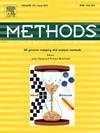使用深度学习预测m6A站点的计算模型
IF 4.3
3区 生物学
Q1 BIOCHEMICAL RESEARCH METHODS
引用次数: 0
摘要
RNA修饰对于增强RNA分子的结构和功能多样性,调控RNA生命周期的各个阶段起着至关重要的作用。在这些修饰中,n6 -甲基腺苷(m6A)是真核mrna中最常见的内部修饰,在过去的十年中得到了广泛的研究。准确识别m6A修饰位点对于了解其功能和潜在机制至关重要。传统方法主要依靠机器学习技术来识别m6A站点,通常无法全面捕获这些站点的上下文特征。在这项研究中,我们全面总结了以前发表的基于机器学习和深度学习的方法。我们还在基准数据集上验证了多种深度学习方法,包括以前未充分利用的m6A位点预测方法、专门为生物序列设计的预训练模型和其他基本深度学习方法。此外,我们进一步分析数据集特征并解释模型的预测以增强理解。我们的实验结果清楚地证明了深度学习模型的有效性,阐明了它们在准确识别m6A修饰位点方面的强大潜力。本文章由计算机程序翻译,如有差异,请以英文原文为准。
Computational models for prediction of m6A sites using deep learning
RNA modifications play a crucial role in enhancing the structural and functional diversity of RNA molecules and regulating various stages of the RNA life cycle. Among these modifications, N6-Methyladenosine (m6A) is the most common internal modification in eukaryotic mRNAs and has been extensively studied over the past decade. Accurate identification of m6A modification sites is essential for understanding their function and underlying mechanisms. Traditional methods predominantly rely on machine learning techniques to recognize m6A sites, which often fail to capture the contextual features of these sites comprehensively. In this study, we comprehensively summarize previously published methods based on machine learning and deep learning. We also validate multiple deep learning approaches on benchmark dataset, including previously underutilized methods in m6A site prediction, pre-trained models specifically designed for biological sequence and other basic deep learning methods. Additionally, we further analyze the dataset features and interpret the model’s predictions to enhance understanding. Our experimental results clearly demonstrate the effectiveness of the deep learning models, elucidating their strong potential in accurately recognizing m6A modification sites.
求助全文
通过发布文献求助,成功后即可免费获取论文全文。
去求助
来源期刊

Methods
生物-生化研究方法
CiteScore
9.80
自引率
2.10%
发文量
222
审稿时长
11.3 weeks
期刊介绍:
Methods focuses on rapidly developing techniques in the experimental biological and medical sciences.
Each topical issue, organized by a guest editor who is an expert in the area covered, consists solely of invited quality articles by specialist authors, many of them reviews. Issues are devoted to specific technical approaches with emphasis on clear detailed descriptions of protocols that allow them to be reproduced easily. The background information provided enables researchers to understand the principles underlying the methods; other helpful sections include comparisons of alternative methods giving the advantages and disadvantages of particular methods, guidance on avoiding potential pitfalls, and suggestions for troubleshooting.
 求助内容:
求助内容: 应助结果提醒方式:
应助结果提醒方式:


